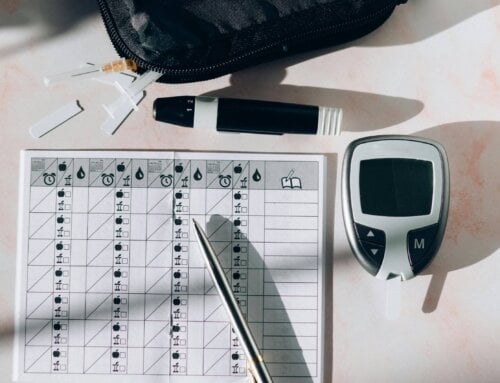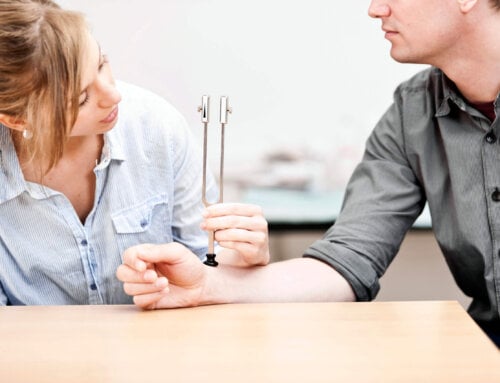During this week’s diabetes management training, I instructed a 62 year old male who has had type 2 diabetes for over 15 years and was never given the skills of diabetes education. He has always worked as a cab driver and did not have health insurance until the recent introduction of ACA insurance. Since receiving insurance, he has attended some of his appointments and taken 2 pills to help control blood sugars. Unfortunately, he still had very little understanding about diabetes and how to care for himself. He was not testing his sugars with a glucose meter and had no idea what his readings were. He recently noticed some swelling and redness around his left shin and promptly went to the podiatrist for a consultation. He was told he had poor circulation and to wear support hose daily; he found putting the stockings on nearly impossible since he weighed over 350 pounds and could barely reach his lower legs. He became frustrated, stopped wearing them and just ignored the problem. Luckily, during our interview, we assess skin integrity and look for open wounds. He explained how he originally scratched his lower leg while flaking off a patch of dry skin. It was now about a month since his original scratch which he thought would amount to nothing. His A1C was 9.5% (he did not understand what that meant) and his fasting sugar that morning was 340 mg/dl. I explained that elevated blood sugars can increase the risk of skin infection and that the infection could be raising his blood sugars. We also reviewed that reduced blood flow from vascular problems (due to his untreated diabetes over the years) could increase the risk of infection. After checking his leg, I immediately phoned his primary care physician who suggested he come right in. He was diagnosed with cellulitis which can be serious if not treated appropriately. He was fortunate to not end up with a bigger problem. I want to share some information about cellulitis to make you more aware of the implications.
 Check the symptoms: The symptoms of cellulitis may include redness, red streaking, swelling, warmth, tenderness, pain, red spots/rash or skin dimpling over a specific region of the body. It may contain blisters exuding clear or yellow fluid or pus. Cellulitis can occur on any part of the body but is most common on the lower legs or feet. You may experience fever, chills, nausea and vomiting, flu like symptoms, hardness in the area and numbness. Be aware of blood sugars as well as these symptoms so you can report them.
Check the symptoms: The symptoms of cellulitis may include redness, red streaking, swelling, warmth, tenderness, pain, red spots/rash or skin dimpling over a specific region of the body. It may contain blisters exuding clear or yellow fluid or pus. Cellulitis can occur on any part of the body but is most common on the lower legs or feet. You may experience fever, chills, nausea and vomiting, flu like symptoms, hardness in the area and numbness. Be aware of blood sugars as well as these symptoms so you can report them.- Why does it happen: Cellulitis is usually caused by Staphylococcus or Streptococcus but many other bacteria’s may cause it. A more recent common cause is MRSA (methicillin- resistant staph aureus) which is very difficult to treat since it does not respond to most antibiotics. It occurs when there is a break in skin integrity. The causes could be due to an insect bite, dermatitis, a previous surgery or incision, burns, scratches, ulcers, dry skin or animal bites. Anything which introduces a skin opening can develop cellulitis since bacteria may enter. It can even occur from athletes’ foot, a common fungus especially when you have diabetes. Cellulitis can occur on the foot and quickly spread up to the lower leg. It starts on the epidermis and then involves the deeper layers of dermis and subcutaneous tissue.
- Who gets it: Anyone can develop cellulitis but it is more common in certain populations. It is seen in all races, ages and in both males and females. It does develop more often in people who are middle aged or older. It is especially common in those who have chronic lymph edema (swelling) or in people with weakened immune systems. These include people who have diabetes, HIV, take steroids, shingles, eczema, psoriasis, lupus, multiple sclerosis or other autoimmune diseases. Some people may even get it after swimming in fresh or sea water when they have a small cut or scratch. Those who have varicose veins or liver disease including hepatitis and cirrhosis are more at risk.
- What if you think you have Cellulitis: Since this can become a critical situation, it is important to alert your health care provider immediately. If it happens during the night or weekend, head to an outpatient emergency center or hospital emergency room, if necessary. They will perform a history and physical as well as blood tests or cultures for the bacteria. White blood cells may be elevated to help fight the bacterial infection. If untreated, cellulitis can turn into sepsis; sepsis is a systemic problem that spreads bacteria into the bloodstream and may cause death. Cellulitis is generally treated with oral antibiotics, rest, elevation and OTC pain relievers including Advil or Motrin. If this is not sufficient, it may be treated with intramuscular or IV antibiotics which can be given in the home, an outpatient clinic or in the hospital.
- How do I prevent this from happening: As discussed in previous newsletters, foot and skin care are extremely important when you have diabetes especially when blood sugars are out of control. Visit your physician and podiatrist on a regular basis and request a full foot and leg exam. They may perform an ultrasound, pressure tests or tests for sensation. Be extra careful if you have existing edema or extra dry skin on the legs. Check your feet daily for any changes in color, temperature, blisters, corns or open skin. Use a long-handled mirror if you can’t see the bottom of your feet or ask a family member to help. Make sure your shoes fit properly since feet can spread as we age. Wear supportive shoes that are made from natural products (not plastic or vinyl) that can expand and contract with perspiration. Wear socks to help your feet stay dry since moisture can increase the risk of fungus and bacteria; socks should contain mixed fibers of nylon and cotton for best absorption. Treat any superficial cuts or scrapes with soap and water followed by an antibiotic ointment and covering; remove the bandage at night to let it air dry. Always keep feet protected by wearing slippers in the house and water shoes at the pool or ocean. Wear sneakers and socks when walking and sturdy shoes when gardening or doing any outdoor labor. Bathe in warm, not hot, water and wash carefully between toes as well as the soles. After bathing, use a high quality moisturizer that works well on super dry skin. There are special OTC products for people with diabetes since they often have such dry skin. Avoid fragrance, color and artificial ingredients if possible. Trim nails with a clipper and emery board and do not cut them too short. If you have fungus or ingrown nails consider visiting a podiatrist and never self treat foot problems.
Cellulitis can be prevented with diligent attention and care. Know what to look for and take active steps to make sure you do not end up with this unnecessary and possibly disastrous problem!
NOTE: Consult your Doctor first to make sure my recommendations fit your special health needs.












Thank you for your brilliant explanation on
Caring for on self with diabetes. I am now able to Help my husband with all the problems he had regarding his health which you have kindly and clearly explained and advised on .
Your information is most appreciated thank you so much .